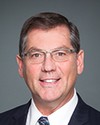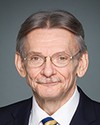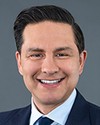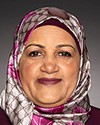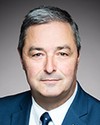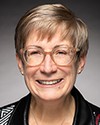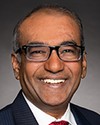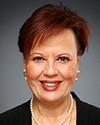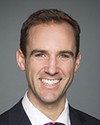Thank you, Mr. Jones.
Mr. Chair, and all of the committee members, good morning.
First of all, I would also like to thank you for inviting us to participate in today's session to speak about the results of the Auditor General's report and about what we are doing in the army and in the Canadian Forces to address some of the concerns raised in the report.
The army welcomes the opportunity to have an audit conducted by the Auditor General. By all accounts, our support to the team was significant, with over 1,600 documents passed from my office to the audit team in a 10-month period, demonstrating the complexity of the subject. Like Mr. Jones, I also want to thank and compliment the audit team for their hard work.
The audit spans a period of three fiscal years, which was inclusive of the former and the present chief of the defence staff. General Vance, the current chief of the defence staff, reinforced his predecessor's vision in October 2015 when he issued a directive to strengthen the primary reserve as a predominantly part-time professional force, located in communities across Canada, ready with reasonable notice to contribute to operations at home and abroad.
The army has embraced that vision and sees the reserve forces as an integral part of the army team. Beyond its operational role, the army reserve acts as the familiar local face of the Canadian Army in communities across Canada.
Based on current infrastructure, 97% of the Canadian population lives within a 45-minute drive of an army reserve armoury. Our local units provide an excellent opportunity for Canadians to experience the Canadian Armed Forces first-hand.
The role of the army reserve is a professional part-time force that provides local engagement and a responsive integrated capability at home or abroad in support of the army mission.
Being part-time, the reserve force will be trained to the same standard, but not to the same breadth as the regular force. Additional preparative training just prior to deployment will always be required.
The tasks assigned to a reserve unit must be commensurate with the level of employment that is nominally based on one night a week and one weekend a month.
For the last 25 years, the army reserve has provided upwards of 20% of the deployed forces in such places as Afghanistan, the Balkans, Haiti, Sierra Leone and in several other missions.
The army reserve is also called upon to augment and support domestic operations including the Vancouver Olympics and the G8 and G20 summits.
As well, over the past few years, our reserve troops have assisted civil authorities during a number of natural disasters such as recent flooding in Manitoba and Calgary, as well as in last year's fires in northern Saskatchewan.
The army reserve force is currently funded for, on average, 37.5 days per year per member. General funding is also planned for a seven-day group event for half of the reserve force.
Furthermore, the army reserve, according to the army strength report dated May 15, 2016, has 18,550 serving members. However, approximately 1,287 of that number have not attended training in the past 30 to 180 days. Currently, 4,082 of that number are undergoing basic training to reach the initial employment standard. This leaves around 13,181 reserve soldiers trained and available for operation.
The army reserve has proven a deployable domestic capability with the development of 10 territorial battalion groups and four Arctic response company groups.
They are also tasked to generate components of the influence activities task force and the persistent surveillance system, and to provide static and mobile force protection.
It's very important to know that the army reserve is designed to be integrated with the regular army component in order to meet domestic and international operational requirements, and to work as one army team. The concept of integration for international operations is in constant evolution and will continue to be built over the next several years to adapt to the operational requirements and the changing demographic. This integration is not solely envisioned as individual augmentation to help fill structure in the regular force. The army reserve will continue to generate task-specific formed elements to support operations at home and abroad.
Let me now address a few points from the Auditor General's report and some of the other initiatives we are taking to ensure that the army reserve remains efficient and responsive to the needs of the Government of Canada in the years to come.
On recruiting, we are working closely with Major-General Joyce and his team to develop a more streamlined recruiting process that sees new soldiers on the armoury floor within 60 to 90 days of beginning the recruitment process.
On the financial side, the army is reviewing the army reserve funding model to create a more transparent process to allocate resources to ensure training objectives are met. Therefore, we have established a corporate-level financial account as of April 1, 2016, that ensures the transparent allocation of funding for the reserve program. Money cannot be repurposed out of that account unless doing so is sanctioned by the deputy minister or the chief of the defence staff.
On medical care, Canadian Forces health services group, which is part of military personnel command, continues to develop a solution for reserves medical care. Communiqués have been issued throughout the health services chain of command so that all medical facilities understand their responsibility to provide health care services to reservists.
On training, we are consistently reviewing the training system to ensure we integrate training and to ensure that all soldiers are ready for domestic and international operations in due time. We are also developing a formalized tracking mechanism to formally record when all 10 territorial battalion groups and the four Arctic response company groups are confirmed ready on an annual basis.
On equipment, the army manages equipment and support available to provide the resources the army reserves need at any given time for training and operations. We prioritize the equipment we have to meet all of our training and operational requirements. We are also investing in minor equipment purchases, like the delivery of civilian vehicles to the territorial battalion groups scheduled for this summer.
In conclusion, Mr. Chair, I would like to emphasize that the army reserves are undergoing a transformation as a result of the CDS directive to strengthen the reserve forces. The Office of the Auditor General's report tabled on May 3, 2016, only adds to the areas that need change.
This is our way of ensuring that the army reserve remains efficient in responding to the needs of the Government of Canada in the years to come.
Mr. Chair, I would like to again thank you and the members of the committee for hearing us today.
We would be happy to take any questions you may have at this time.
Thank you very much.

